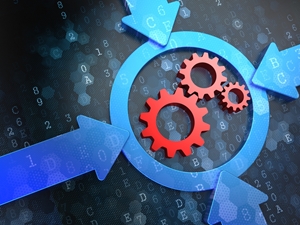Accountancy in the modern age is, oddly enough, becoming less and less about just number-crunching. Automation, software, business support – a good accountant nowadays has far more than just the ability to sum. They have to present a full, holistic service that takes far more than just payroll into account.
That’s why Rajeev Dixit, CPA, MBA and founder of DBS Accountants, has such a focus on recommending, monitoring and educating people on the latest automated payroll systems – because a modern business with a modern accountant needs the very best that modern technology can offer.
Eliminating the errors
“The biggest problem with traditional systems is that they have multiple levels of data entry.”
Traditional payroll systems, even those that use modern technology like fingerprint scanners, have one singular issue that results in missed wages, incorrect payroll and additional administrative work – human error.
“The biggest problem with traditional systems is that they have multiple levels of data entry and multiple manual interventions,” said Rajeev.
“Any one of them can result in a mathematical error.”
So what can automated systems do to correct these issues?
“Fully automated payroll systems have a single point of data entry. What time a person started work, what time a person finished – from then on it is automated,” Rajeev explained.
The human error factor is eliminated as much as possible, reducing current and future workload for people that are already time-poor.
Specific uses
“Keeping track of attendance and making sure people pay at the right rate is important.”
These aren’t just systems that should be considered for large companies, either. Medical businesses in particular can benefit from the use of automated systems, as these enterprises will often employ a large number of casual or part time staff.
“Small practices may have one secretary who is working fulltime, most practices will have people working in shifts,” said Rajeev.
“Keeping track of attendance and making sure people pay at the right rate is important.”
Younger staff members can also present an payroll problem. As soon as a 16-year-old staff member turns 17, they are entitled to a higher pay packet – if a medical professional who simply does not have the time to deal with this particular piece of employment law, it can cause major issues down the line.
Medical SME owners are busy people. They have both the responsibilities of running a business as well as providing important healthcare services to their customers or clients. Automated payroll systems simply remove this added legislative burden, as well as the errors that are inherent to a more traditional system.
A slight misnomer
“You need an accountant who is more than just a numbers person, but is also skilled in business consulting.”
However, Rajeev also describes how the term ‘payroll’ in the name could end up misleading people into believing that numbers are all such a system has to offer.
“Properly implemented payroll software helps with a lot of things. When it comes to super, you can click one button and pay everybody’s super. When it comes to payment summaries, you can press one button and issue payment summaries,” he said.
Taking a more holistic approach is the key to understanding how to make the most of your automated payroll software. And where do you begin? With your accountant – assuming that they have the expert experience required.
“You need an accountant who is more than just a numbers person, but is also skilled in business consulting,” Rajeev explained.
“They will understand your business, they will be able to work out what you really need, and they can talk to you about best practices.”
Rajeev and DBS Accountants take a holistic approach to accounting. While automated payroll systems can certainly offer you a means to reduce your bookkeeping workload, that is just the start of their true value to their business.
For more information on automated payroll systems and how you can use them in your business, get into contact with DBS Accountants today.

